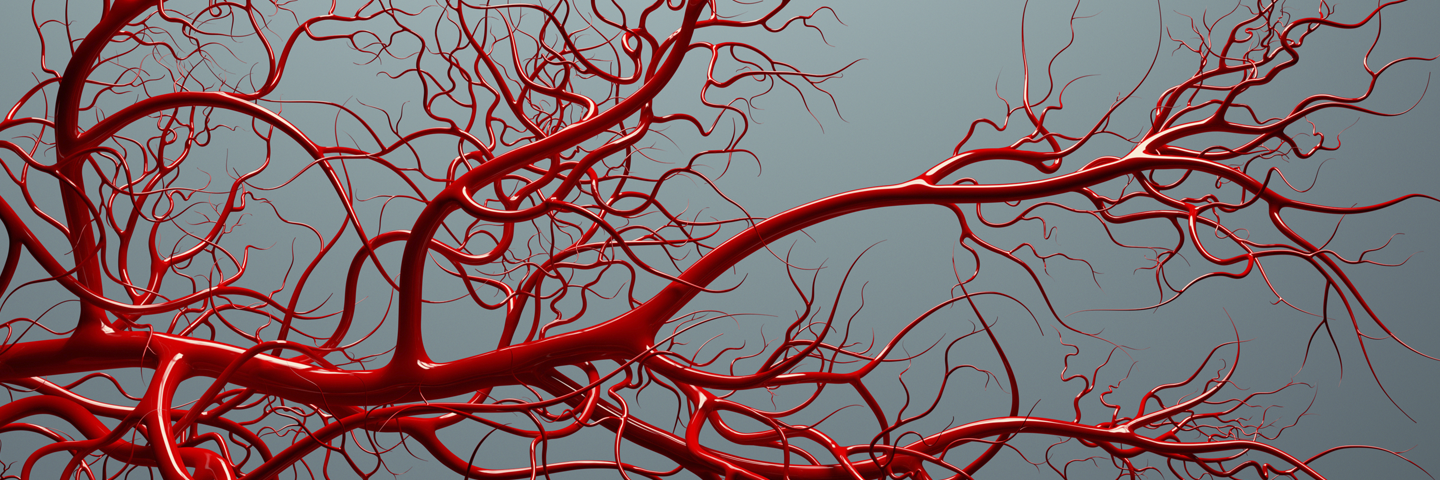
Angiogenesis, or the formation of new blood vessels, is a multi-step physiological process that is involved in a large number of normal and disease state processes. Under normal conditions such as embryonic development and wound repair, angiogenesis is activated to provide a conduit for delivering oxygen and nutrients to and removal of carbon dioxide and wastes from tissues. Additionally, this process occurs in diseases such as cancer, diabetic blindness, age-related macular degeneration, rheumatoid arthritis, psoriasis, and more than 70 other conditions.
The Process of Sprouting
Much of the process of angiogenesis in normal, physiological settings has been well characterized. The process is initiated when angiogenic growth factors such as angiogenin and vascular endothelial growth factor (VEGF) activate receptors on endothelial cell walls. These growth factors can be circulating or released as a result of mechanical stimulation (e.g., wounding). As a result of receptor-mediated signal transduction, the endothelial cells secrete proteases, which break down basement membrane surrounding the local tissue. Once room is made for growth, the endothelial cells proliferate into the matrix, forming a sprout-like structure. The sprout then closes off, creating a lumen that blood can flow through.
Cardiovascular disease
Cardiovascular diseases are the leading cause of death worldwide. While prevention initiatives and therapeutic advancements have successfully reduced the mortality related to these diseases, the cardiovascular disease burden remains high. Much is still unknown about the pathophysiological basis of cardiovascular disease and the differences seen between genders, age groups, and ethnicities. To gain a better understanding of these diseases, innovative approaches and authenticated cell models are essential.
Discover MoreToxicological Screening
Toxicity testing of new substances is an essential step in the drug development process. Because this testing is used to evaluate the safety of a potential drug candidate that may be used in humans, it is critical that the cell models used are physiologically relevant. Discover how advanced cell models like differentiated iPSCs and hTERT-immortalized primary cells can help.
Discover NowAngiogenesis Misappropriated
While angiogenesis is required for normal growth, development, and wound healing, it can appear in many disease states. Generally, inappropriate angiogenesis presents when diseased cells and tissues produce abnormal amounts of angiogenic growth factors, overwhelming the effects of natural angiogenesis inhibitors. Under these conditions, the new blood vessels are utilized to feed diseased tissues; however, the new vessels are abnormal and leaky and can destroy normal tissues. Moreover, in instances of angiogenesis that are associated with tumorigenesis, the abnormal vessels allow tumor cells to escape into the circulation and lodge in other organs (tumor metastases).
By contrast, insufficient angiogenesis can occur in diseases such as coronary artery disease, stroke, and chronic wounds. Generally, this deficiency in blood vessel growth occurs when the local tissues do not produce adequate amounts of angiogenic growth factors. In these cases, blood vessel growth is inadequate and circulation is not properly restored, leading to a shortage of oxygen and other nutrients followed by the risk of tissue death.
The importance of angiogenesis as a druggable target for intervention in scores of disease states underscores the need for preclinical models that recapitulate this biological process. That’s why we’ve created advanced cell systems to model angiogenesis for drug development, toxicity studies, and basic research.